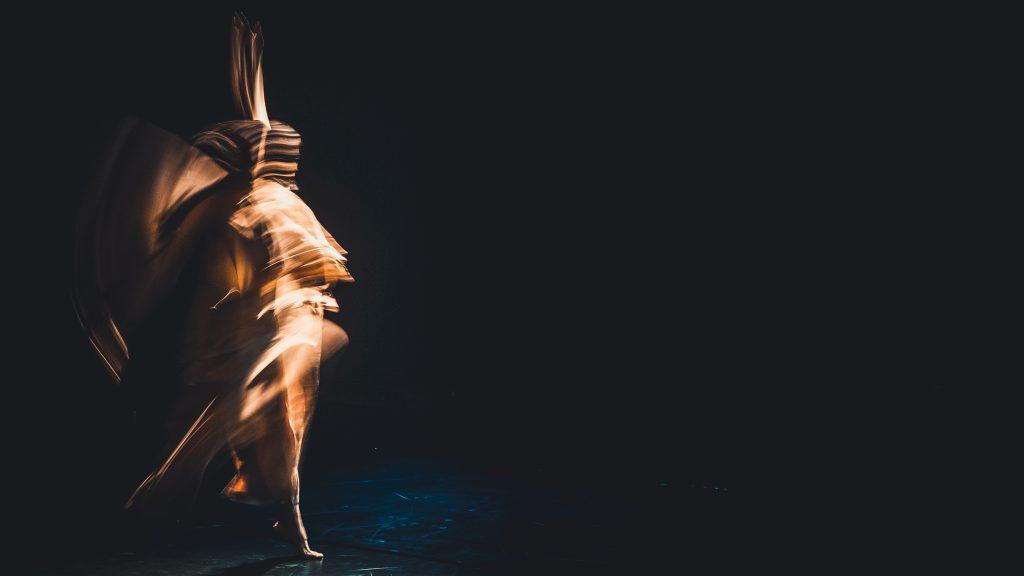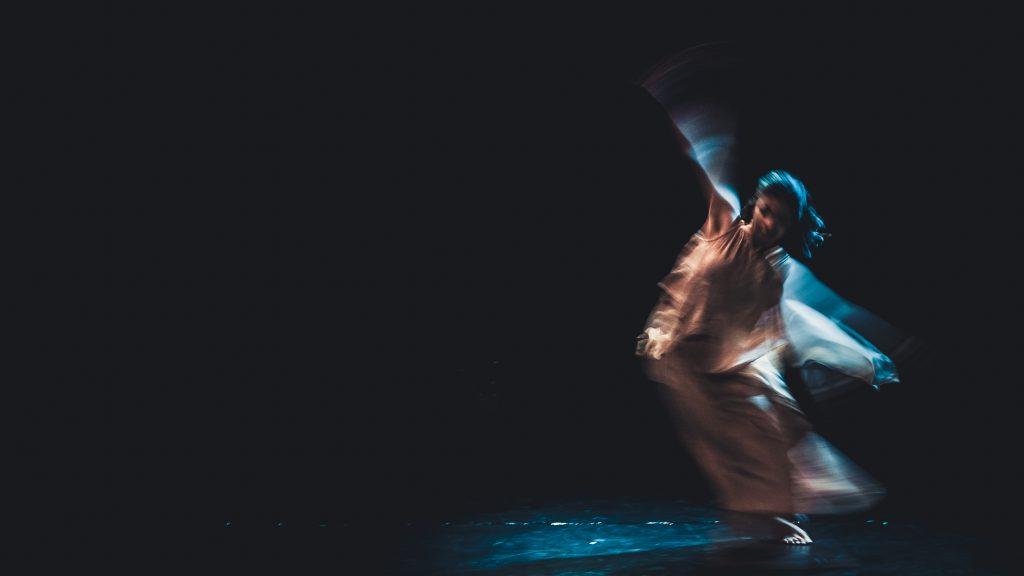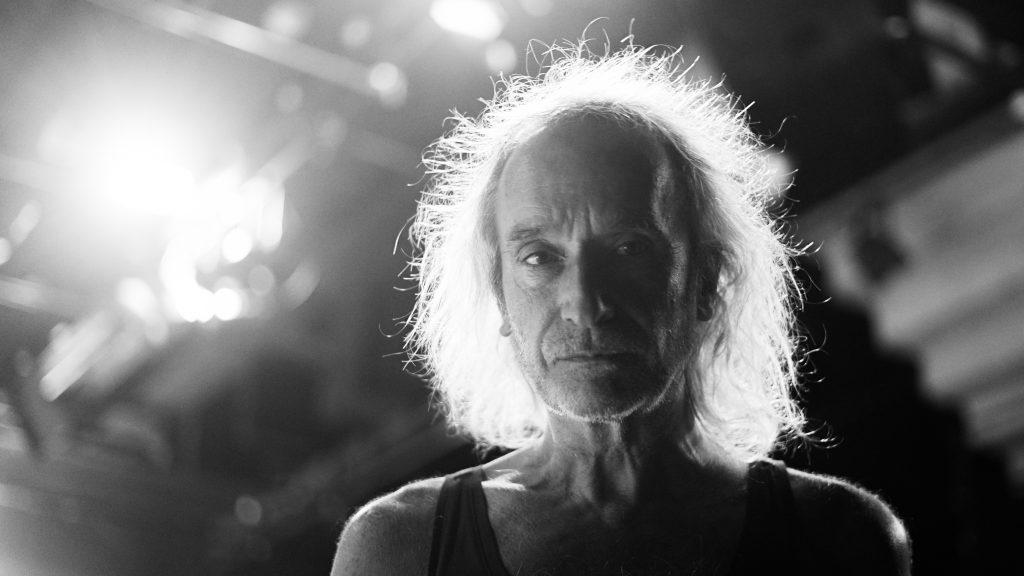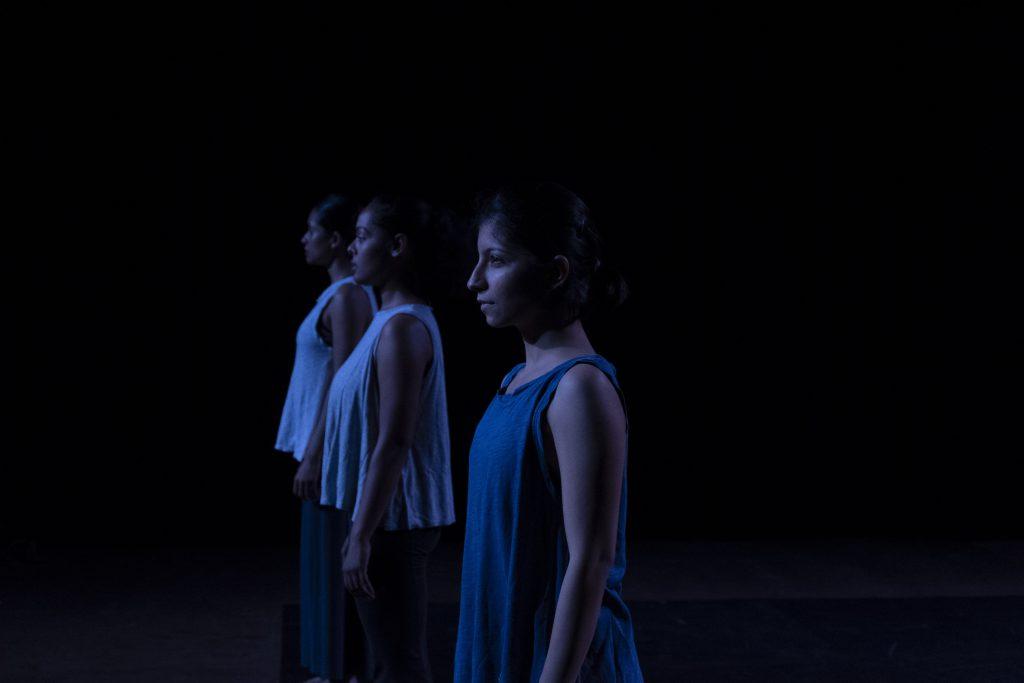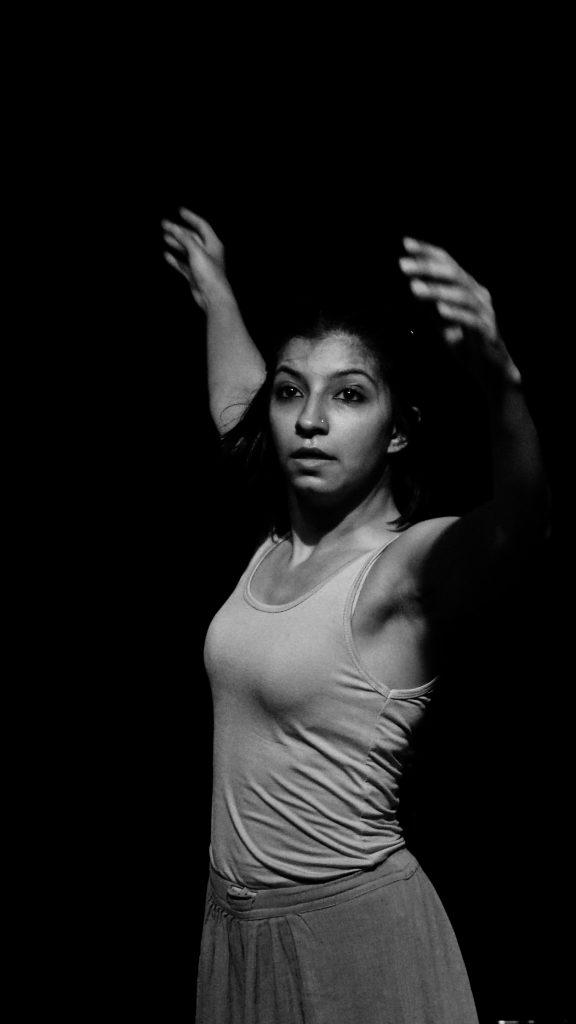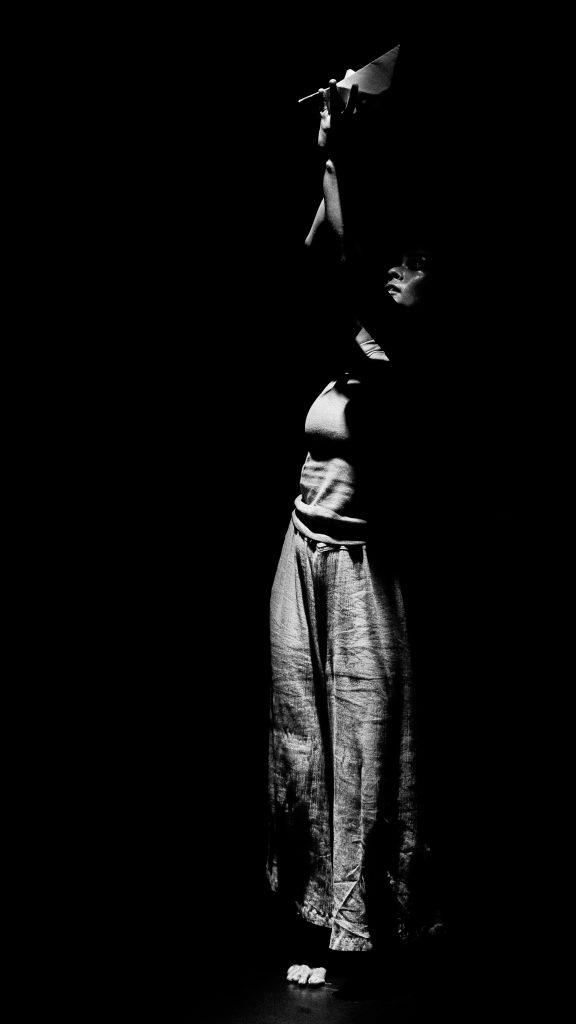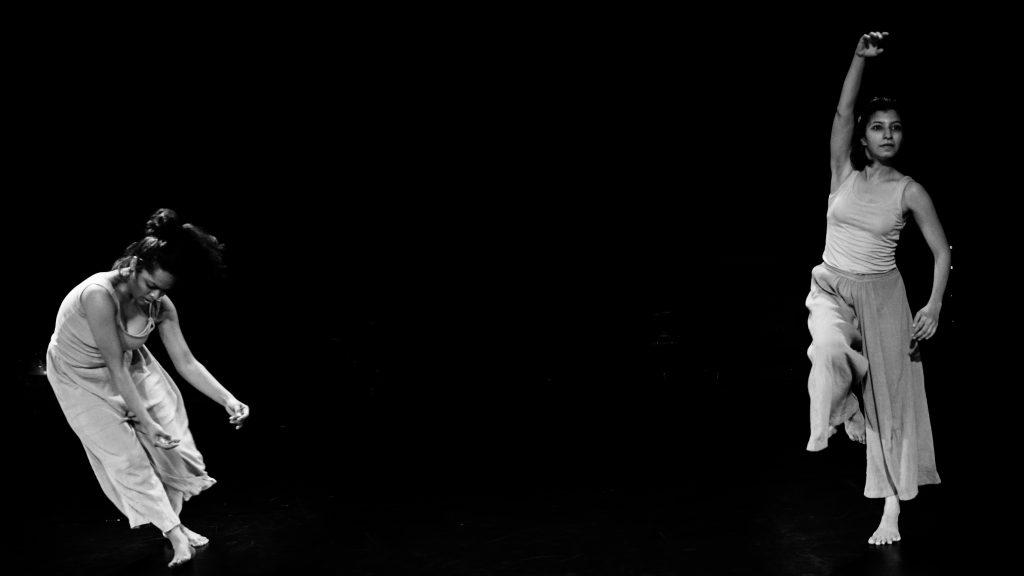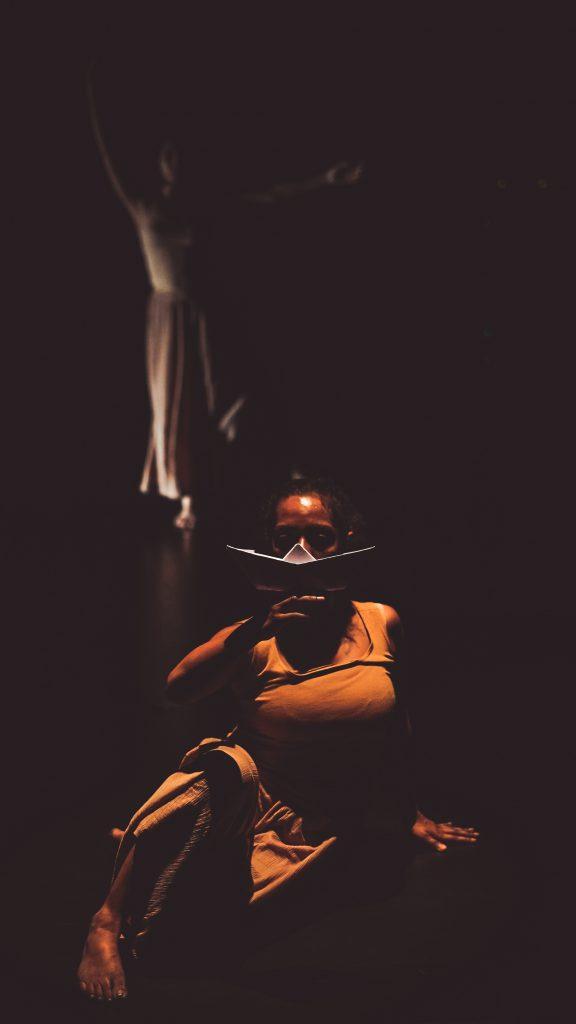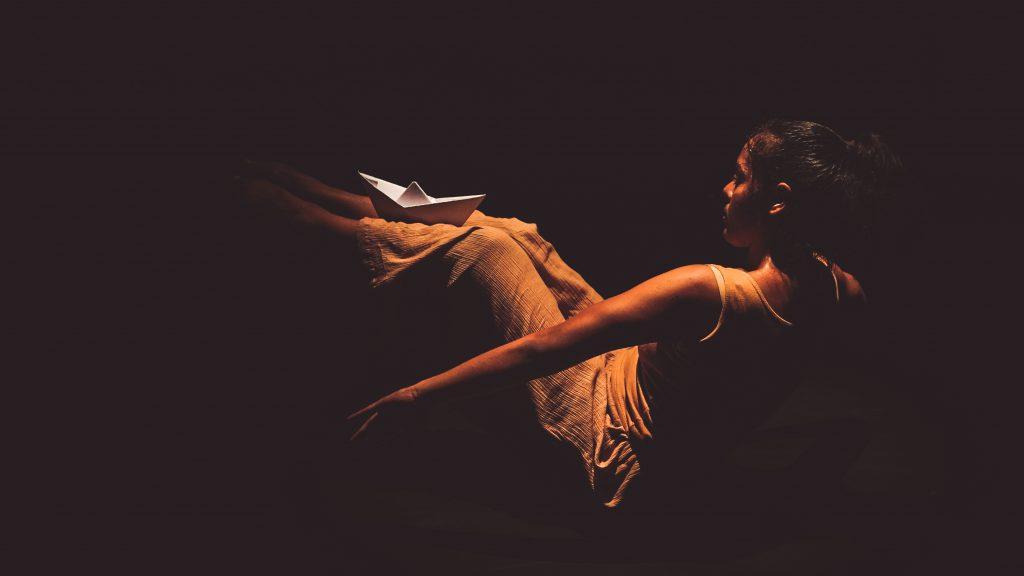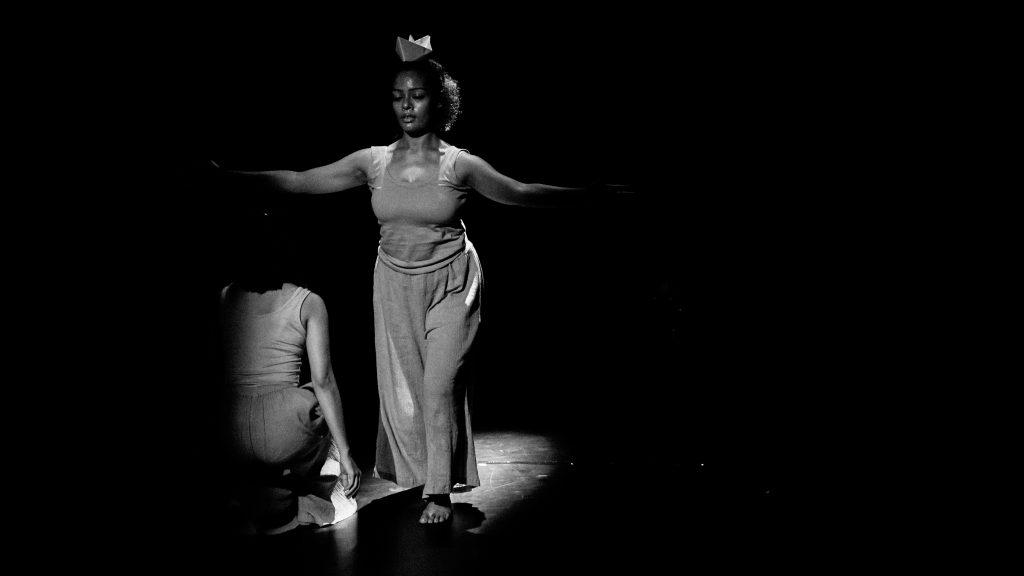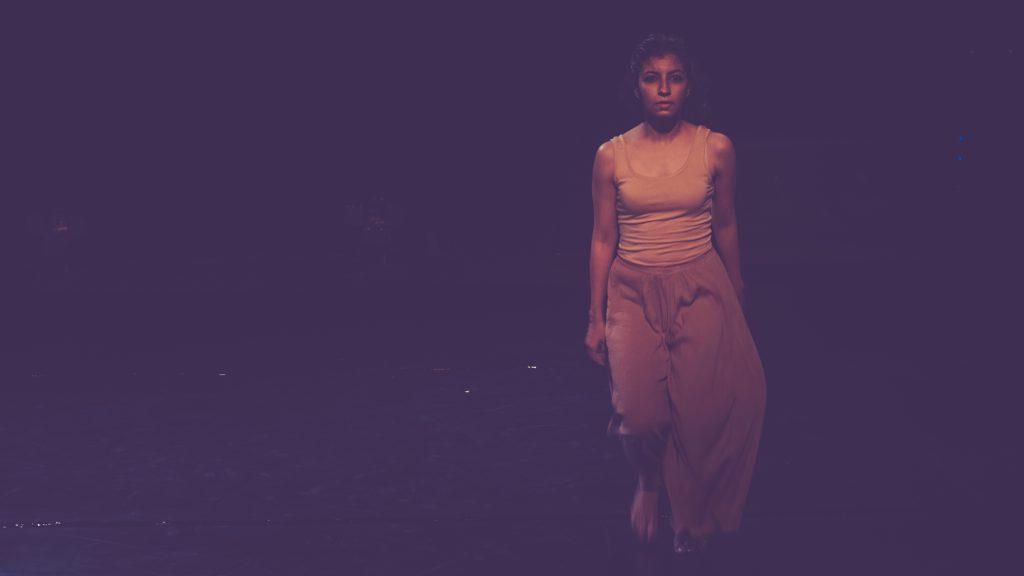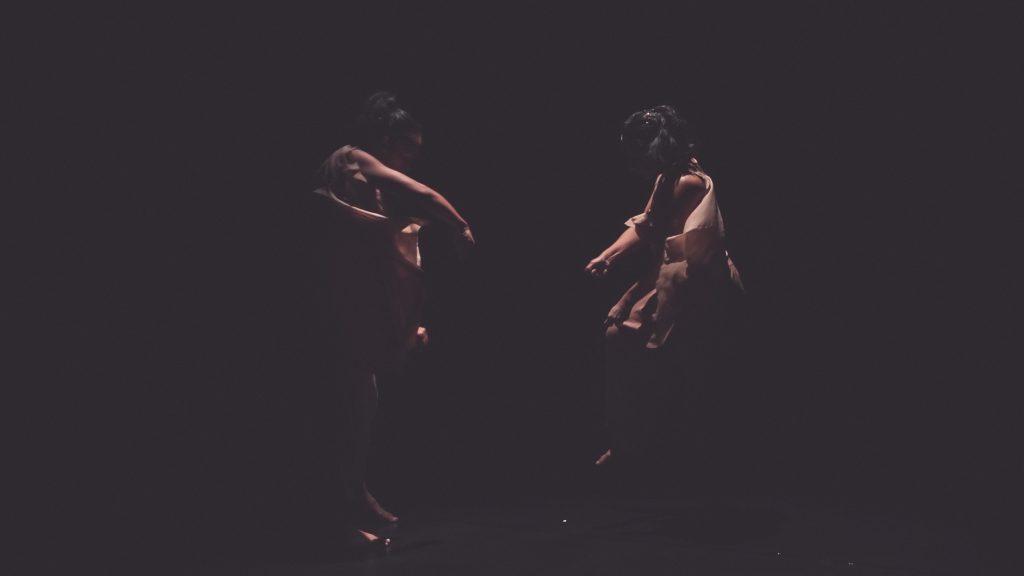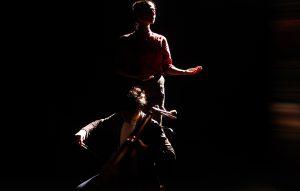in conversation with the artists of Water Games: a journey to the Sea
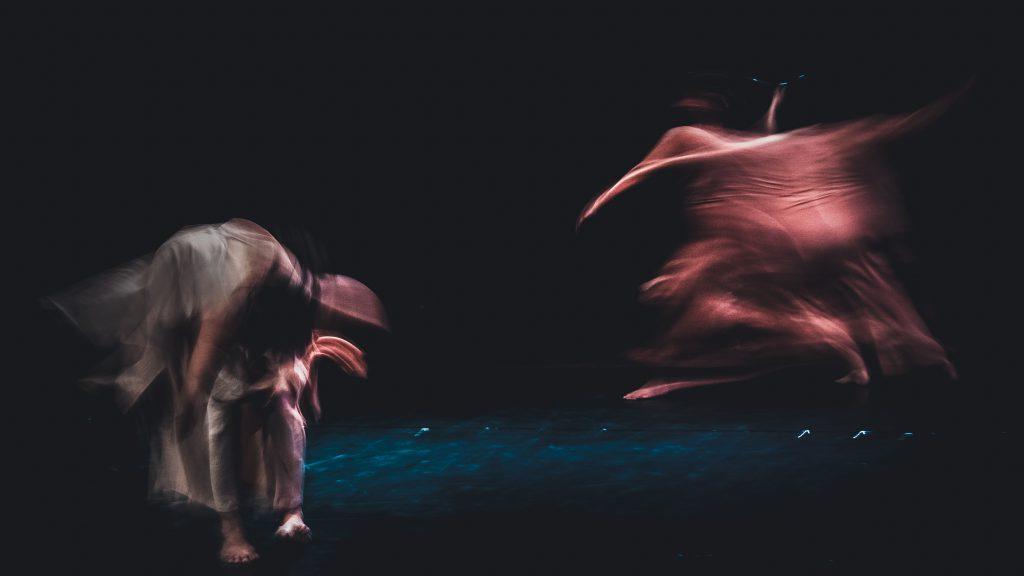
Image by Rahul K. Rajoriya @aframeahead
I remember chasing down waves as a child as they rapidly moved in and out with the tide. Sometimes the water would recede to reveal a tiny crab crawling on the shore, only to suddenly disappear under the sand, leaving just a small black hole behind it. The sea and its depth is captivating – when you run into the waves there comes a point when the shore escapes from beneath your feet and you’re left in a sudden free fall, floating…it feels dangerous but free at the same time. A sense of lightness. Until the tide brings you back to shore and you collide with reality – rolling into the sand, struggling to regain control and find your feet again.
That was one of the many experiences of the beach that Water Games brought up for me. The second Performance Long Run at G5A explores such experiences through contemporary dance and movement rooted in the Feldenkrais approach. It is a subliminal piece that takes you back to memories and encounters with the sea. As the performers – Bhavna Pani, Dipna Daryanani and Kamakshi Saxena – find their feet and fluidly traverse the “stage” supported by a soundscape of nature, music and poetry, they take the audience with them on a journey through water and its various moods.
For Michel Casanovas, the choreographer of Water Games, this elusive relationship with the sea was a central theme he has yearned to explore with his choreographic practice. Born and raised by the sea in the South of France, he says, “The dimension, the intensity of the sea, the element of fluidity and the immense potential and strength of the water has always been fascinating for me.” He has been exploring this theme in various Feldenkrais and dance workshops and residencies in India for over ten years. Bhavna, Dipna, and Kamakshi have all worked with Michel in different capacities during this time, and Water Games emerged organically from these interactions over the past year.
Dipna’s association with Michel goes back to when she was a dance student. She found him at a time in life where he helped her find clarity on how she wants to pursue dance in her life – simply by his way of teaching, his approach to movement and to life. Kamakshi found him at a workshop in Jaipur, where she fell in love with his process. “It was just a Feldenkrais session and a movement workshop, there was no choreography, nothing. I was just recovering from an injury, and that space was so therapeutic for me. At the time I had no idea that there was a work in progress. Then a few weeks later I got a text from Michel saying ‘I’m working on this thing and would you like to be a part of it? It’s in Bombay’, and I said ‘Yeah, of course I’d love to!’” she recalls.
The Feldenkrais method is a deeply somatic, almost spiritual practice for Michel. It uses gentle, mindful movements to re-establish a connection between the mind and body – a practice that helped him recover from an injury and reconnect with dance and movement again, as it did with Kamakshi.
Bhavna shares how intensive yet enriching the process of developing the piece has been for them. The year long process has involved four residencies spanning about fifty intensive days of work. “In our Feldenkrais sessions with him, he used to make us do this movement with the wave – *flicks her arm repeatedly* – and we didn’t know this idea was germinating in his head. A year or two later we realised Michel has this concept and I was very fascinated by it, so I prodded him and said ‘Let’s do this!’. Then Dipna came in, Kamakshi came in… and it became a lot more consolidated. We started to fall in love with it!” Bhavna reminisces on how it all came together.
A chance meeting with G5A brought them in to develop and rehearse the piece further at the Black Box during the Zero Period this year. In our increasingly capitalist times, where arts practices and therefore arts programming are succumbing to a culture of consumption, driven by what sells and yields profits, artists often struggle to find spaces that encourage truly bold and independent voices and work. The Zero Period is G5A’s small attempt to create that safe space. “And here we are today, we have a show, and the support of G5A, and it’s all a bit unimaginable for us, because we didn’t picture all of this” says Bhavna.
The germ of the project, aside from Michel’s affinity for the sea, also came from the Japanese painting The Great Wave (also known as Under the Wave off Kanagawa) by Katsushika Hokusai, that deeply inspired him. This iconic work of art was also one of the inspirations for a nineteenth century art movement in Europe, Japonisme, that influenced various impressionist painters such as Claude Monet and Vincent Van Gogh.
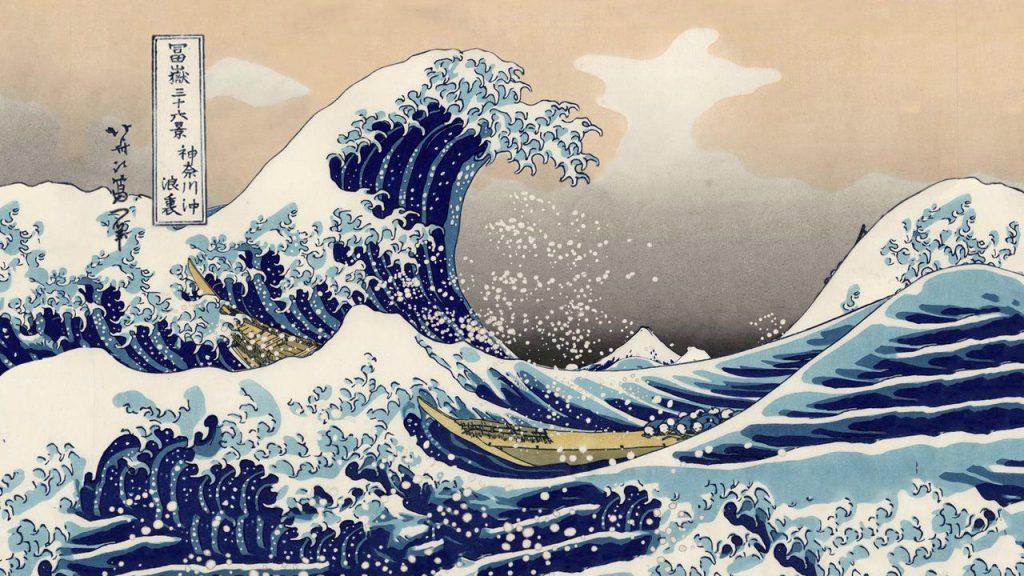
The Great Wave by Katsushika Hokusai
Michel imagines the performance as a painting that celebrates the flow and intensity of the ocean. Text from Pablo Neruda’s evocative poetry from ‘On The Blue Shore of Silence’ used as part of the soundscape further adds another layer of interpretation to the piece. It’s not just the sea, however. The artists share how the whole thing began with the idea of water – water that’s inside you, water that’s outside you. The third state is when it’s neither inside nor outside but you’re on the edge. It emerged from the existence of water in human life.
With a practice so deeply rooted in mind-body connections and the freedom of movement, we were curious to know how the artists began to put this piece together – how could something so ephemeral be defined?
The three unanimously talked about Michel’s process and choreographic style being extremely open and flexible – allowing the artists space to explore the origins of a movement and stay in touch with their bodies. Dipna and Bhavna talk about listening – “He always starts the session by asking ‘So what is your body saying to you this morning?’, and you actually start to listen! I don’t know any dance teacher in this world who asks what is your body saying. They usually go ‘body should say this to you, now go there!’ But here is a man who’s saying ‘What is your body saying to you? Listen, stay with it.’ It’s magical!”, says Bhavna.
Bhavna reiterates that the Feldenkrais practice is not just for dancers, it for human beings. “It trains one to listen to their body, to have a dialogue with the body. We don’t have to be dancers for that” she says. As part of this Long Run, Michel conducted a two-day workshop for dancers and non-dancers at G5A. The workshop On Space and Presence aimed to bring the body in resonance with inner and outer space, enabling participants to discover a deeper dimension through creative movement.
As a choreographer, he gave the artists impulses to explore. Dipna shares, “Michel doesn’t come in with a fixed structure. He’ll come in and say ‘today let’s dive!’” The sail boats emerged from one of his trips when he was in France and he started sailing. “He just brought this image back and one day gave us this paper boat and said ‘Play!’. And that’s how the section with the paper boat came to be, with simple play”.
In this work, the process of bringing in structure came less from rigidity and more from collective decision making. When everyone found something interesting they placed those parts into an arrangement. Even that continued to evolve and change, and with every stint something new emerged. “It’s really a never ending process” says Kamakshi. “He gives impulses and then we play with each other. Then, he edits the play for us” says Bhavna.
Of course they share that the freedom and lack of structure can become tiresome at times. However, Michel being completely at ease with a lack of definition and continuous exploration allows them to be more relaxed. “That was an awakening for me, and an insight into how rigidity is not important. And how in this day and time at a cellular level we are conditioned to strive hard, work hard if you want excellence – but with this process you realise, no, it doesn’t have to be hard!” says Bhavna.
“He gives space for things to happen – there’s no fixed boundaries, he’s always open to suggestions and trying out new things. It’s such an organic process. Nothing that’s forced, and you start finding beauty in your own imperfections” says Kamakshi. For Marvin D’ Souza – , Costume Designer for Water Games – the experience of working with Michel was similar. “We didn’t talk about anything technical at the start. He (Michel) wanted me to spend time with the girls – for him that was the main thing so we could build our own language together. That was really pleasant and doesn’t happen often with freelance work”. The artists believe a process like this allows for authenticity of expression to translate to the audience as well.
With Michel back home in France, their final stint of rehearsals at G5A this September had him directing and conducting the performers via video chat. A make-shift setup of a phone placed on the table with the speaker next to a mic, Michel’s voice echoed through the sound system in the Black Box, as the dancers rehearsed in front of the camera. Despite the distance and limitations of video chat, the dancers, extremely at ease with the process wonder at how Michel was able to notice the tiniest movement of their fingers even through a laptop screen! In a way technology helped bridge the distance, enabling a relatively smooth and crucial stint where the piece became more consolidated, along with the elements of sound, light, and costume also being developed.
Working with the element of water and the sea, this piece naturally brought up nostalgia for the city. For Kamakshi the sea is enchanting and always a treat that she misses back home in Jaipur. Dipna recalls picnics at Juhu beach as a child. Reflecting on ourselves as a society that has begun to neglect the ocean, she says “Now you can’t imagine even removing your footwear on the beach. So much has changed in the past thirty years or so” with pollution making beaches so inaccessible. The longing to be by the sea comes across a lot in the work as we realise how that is starting to get lost in Mumbai.
They hope with this piece to transmit a sense of openness, freedom, and joy to the audience. In some of their sharings the audience has expressed feeling calm and meditative (as have the performers through the process). “If in this day and age, we can give someone one hour of ease and flow, that’s really something” says Bhavna. They strive to achieve that quality where it translates into a physical experience for the watcher, of feeling a certain lightness and no measure of time. Michel describes it as how he feels when facing the sea!
“This piece is all about transcending – you get transported, recollect memories of the sea, special encounters with the sea. That’s what we plan to do with this piece, within one minute make the audience feel like they’re by the sea – how do we do that? It’s a feeling!” says Bhavna. Water Games takes the performers on a journey too, and also reflects their different moods and emotions as people. “You can’t decide with this piece that today I’ll do the performance like this.
You just have to enter, it’s like stepping into the water.” says Kamakshi.
Words by Sukriti Sharma
Images of the show by Rahul K. Rajoriya
If you are an artist or know an artist interested in applying for the Zero Period, here’s how you can learn more and get in touch for the next year. For us at G5A, supporting such work is imperative in order to encourage a culture of rigour, experimentation, and freedom within the artistic process.
